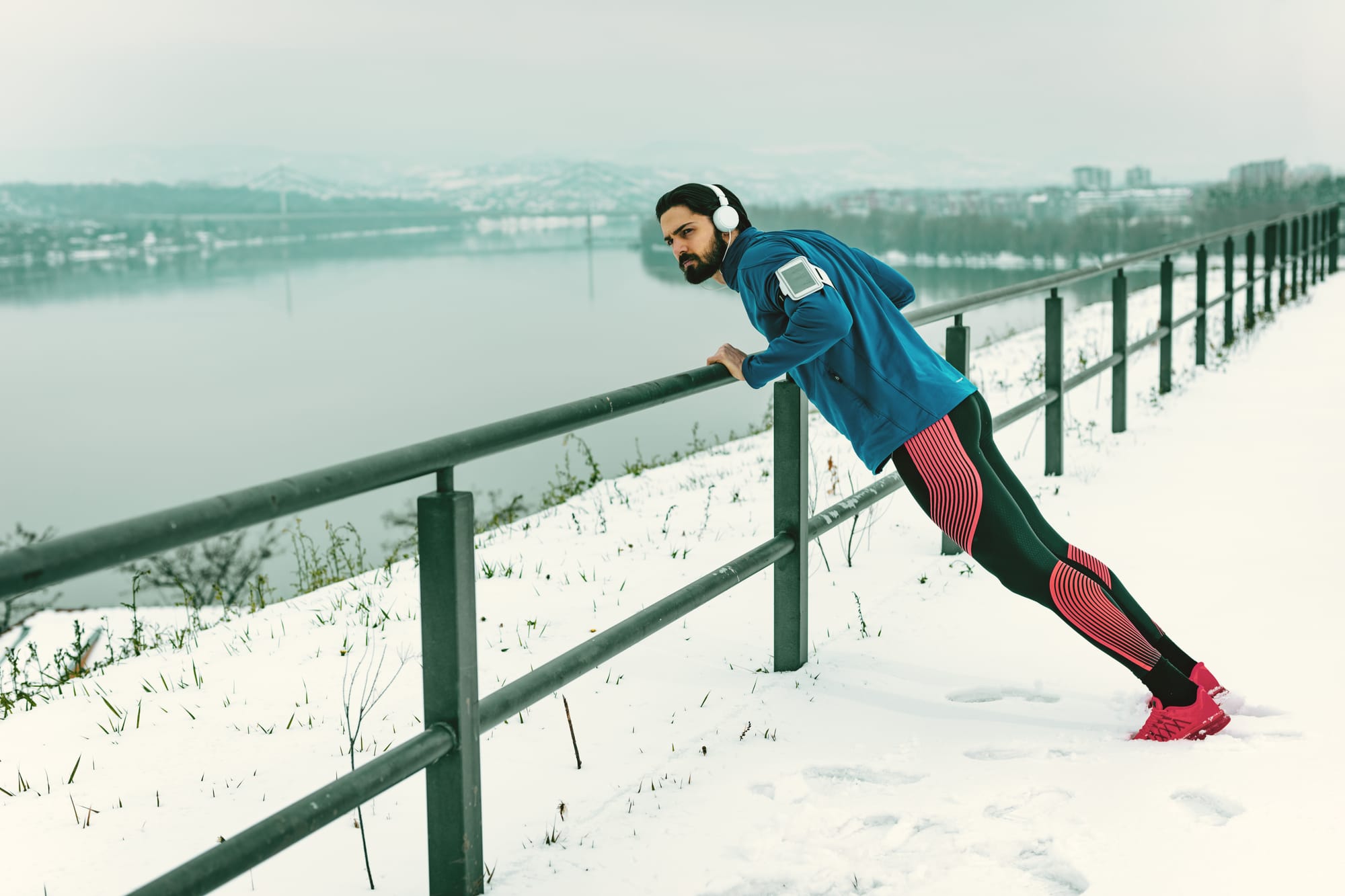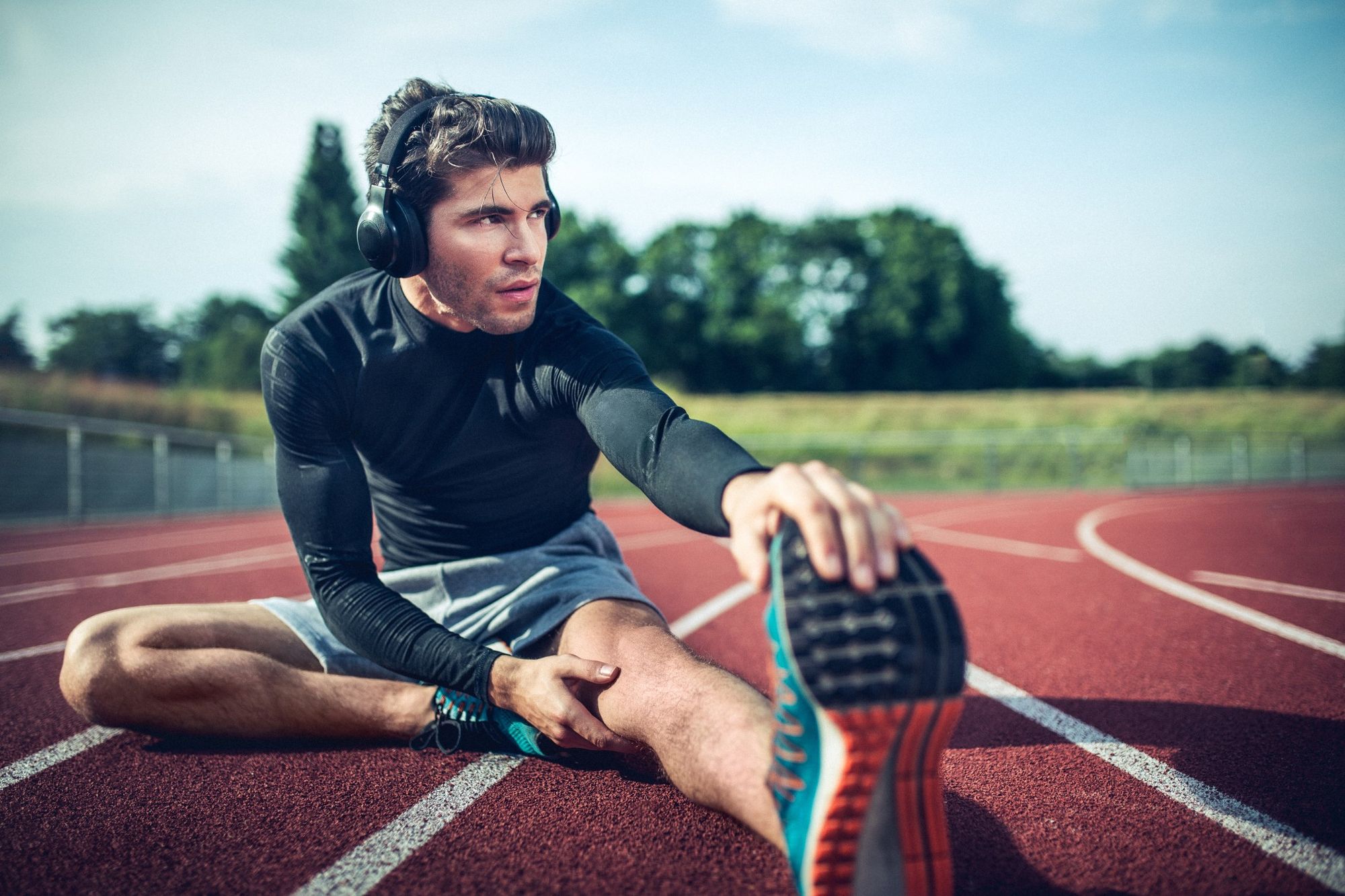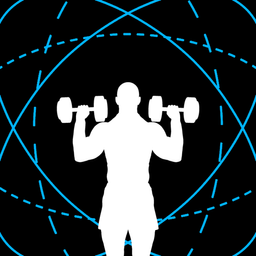What’s Better for Recovery: Hot or Cold?
What's better for recovery: hot or cold? Here, we pit hot immersion baths against cold ones to see which is better for your sore, sore muscles.

You probably know how we feel about using cold showers as a recovery tool. (It’s … pointless.)
But what if we let the mercury climb?
Would a hot shower — or, OK, a hot bath 🛀 — fare any better?
Lucky for us, that’s the exact question researchers investigated in this 2024 study published in Medicine and Science in Sports and Exercise.
What did they find? Let’s see.
About the study
The researchers recruited 30 physically active males and had them complete an individualized exercise-induced muscle damage protocol (translation: a workout designed to induce muscle damage).
Immediately after, the participants were randomly assigned to 3 groups:
- Cold water immersion (11°C for 11 minutes)
- Hot water immersion (41°C — duration: however long it took until their core body temperature reached and remained between 38.5°C and 39°C for 25 minutes)
- Warm bath control (36°C; immersion time matched hot water immersion’s expected duration)
Then, over the next 48 hours, the researchers monitored all 3 groups’ strength recovery (peak torque), explosiveness (rate of force development), and soreness (delayed onset muscle soreness or DOMS and pain sensitivity).
What’s better for recovery: hot or cold?
The results?
Hot water immersion resulted in the quickest recovery of explosiveness and lower muscle soreness, leading the authors to conclude that it’s the preferred post-workout recovery modality.
Before talking about the ‘why’ behind it, let’s first look at what happened with the cold water immersion group.
So, somewhat surprisingly, they also experienced sped-up strength recovery.
But here’s the catch: cold suppresses inflammation, which, while effective at blunting immediate loss of force, also “arrests” muscles’ post-training adaption process, including:
- Muscle growth
- Strength development
(That’s why several studies have consistently associated cold water immersion with poorer long-term muscle growth rates 🫣.)
Right, now, back to why hot water immersion works for recovery.
There seem to be 2 ways high temperatures hasten recovery:
So … always take hot baths post-training?
What’s better for recovery: hot or cold?
Given what the researchers have found, it’s understandable if you now feel tempted to, well, essentially sous-vide yourself post-training.
But before you fork out serious cash on a hot tub (no, you most definitely can’t “just hack it” with a thermometer, trust us, and, also, please don’t try to be that smart ass who sticks their sous vide cooker into their bath [READ THIS!]) … here’s what you need to know.
Bath duration
How much time can you spare for a hot water bath?
If it’s anything less than 25 minutes, don’t bother.
Also, an FYI: a few participants had to stay in the hot water bath for over an hour before their core body temperatures reached the target range (between 38.5°C and 39°C) — so add the additional 25 minutes of soaking time, and you have a total minimum bath time of 1 hour 25 minutes.
Strength of evidence
TBH, plenty of other research has generally found insignificant effects of warmth on recovery compared to placebo.
Safety
For men, if you’re hoping to have biological children, taking regular hot baths probably isn’t doing any favors for your little swimmers 🐟.
That’s because the sperm-producing germ cells in your testicles work best in temperatures slightly below normal body temperatures.
Sperm and testosterone production could both be negatively affected if the temperature within the testicles is elevated by only a few degrees Celsius.
(Not-so-fun fact: exposure to high ambient temperature has been shown to negatively affect sperm quality, including decreased semen volume, sperm count, sperm concentration, motility, and normal morphology.)
Pregnant women should also avoid taking extended hot baths.
During pregnancy, your body temperature shouldn’t rise above 39°C. Research indicates a link between a rise in temperature, congenital disabilities, and even pregnancy loss.
Better recovery methods
And by “better”, we mean “more evidence-based” with fewer potential adverse effects.
We’ve covered them in this article:

But if you’re short on time and would like the TL; DR version, we’ve got you covered:
- Active recovery: Doing some light movement promotes blood flow, which speeds up the delivery of nutrients (e.g., amino acids, the building blocks of protein) to healing muscles and waste product removal.
- Massage: Also stimulates blood flow. Caveat: may need to be done immediately or at least shortly after a training session for maximum recovery benefits.
- Compression clothing: Same mechanism as the above; speeds up recovery by improving blood flow. Just make sure you get the correct size.
Struggling to recover from your workouts?
That said, while there’s nothing wrong with occasionally leaning on recovery methods to bid farewell to those sore, achy muscles and regain your performance potential in the gym, you should probably ask yourself what’s going on IF you struggle to recover from nearly every session.
Is it your …
- Training plan? Are you trying to pack too much training volume and too closely together?
- Diet? Are you fueling your body right? Eating enough calories, protein, and the right mix of carbs and fat?
- Sleep? Are you getting at least 7 to 9 hours of good-quality sleep nightly? (If you’re not, maybe you’d want to check out this article covering natural sleep aid supplements.) Also, how are your stress levels?
Have you gotten a clearer inkling as to where your recovery problems lie? If it has to do with your training plan and/or diet, GymStreak can help. This smart, AI-powered workout can:
Here’s a sneak peek of the app:
References
Abdelhamid, Mohamed Hadi Mohamed, et al. “Mild Experimental Increase in Testis and Epididymis Temperature in Men: Effects on Sperm Morphology According to Spermatogenesis Stages.” Translational Andrology and Urology, vol. 8, no. 6, Dec. 2019, pp. 651–65. PubMed Central, https://doi.org/10.21037/tau.2019.11.18.
editor. “Hot Tubs During Pregnancy.” American Pregnancy Association, 1 May 2018, https://americanpregnancy.org/healthy-pregnancy/is-it-safe/hot-tubs-during-pregnancy/.
“Fever / Hyperthermia.” Mother To Baby | Fact Sheets, Organization of Teratology Information Specialists (OTIS), 1994. PubMed, http://www.ncbi.nlm.nih.gov/books/NBK582757/.
Fyfe, Jackson J., et al. “Cold Water Immersion Attenuates Anabolic Signaling and Skeletal Muscle Fiber Hypertrophy, but Not Strength Gain, Following Whole-Body Resistance Training.” Journal of Applied Physiology (Bethesda, Md.: 1985), vol. 127, no. 5, Nov. 2019, pp. 1403–18. PubMed, https://doi.org/10.1152/japplphysiol.00127.2019.
Hoang-Thi, Ai-Phuong, et al. “The Impact of High Ambient Temperature on Human Sperm Parameters: A Meta-Analysis.” Iranian Journal of Public Health, vol. 51, no. 4, Apr. 2022, pp. 710–23. PubMed Central, https://doi.org/10.18502/ijph.v51i4.9232.
Jackman, Joshua S., et al. “Effect of Hot Water Immersion on Acute Physiological Responses Following Resistance Exercise.” Frontiers in Physiology, vol. 14, July 2023, p. 1213733. PubMed Central, https://doi.org/10.3389/fphys.2023.1213733.
Konkel, Lindsey. “Taking the Heat: Potential Fetal Health Effects of Hot Temperatures.” Environmental Health Perspectives, vol. 127, no. 10, Oct. 2019, p. 102002. PubMed Central, https://doi.org/10.1289/EHP6221.
Sautillet, Benoît, et al. “Hot But Not Cold Water Immersion Mitigates the Decline in Rate of Force Development Following Exercise-Induced Muscle Damage.” Medicine and Science in Sports and Exercise, July 2024. PubMed, https://doi.org/10.1249/MSS.0000000000003513.


